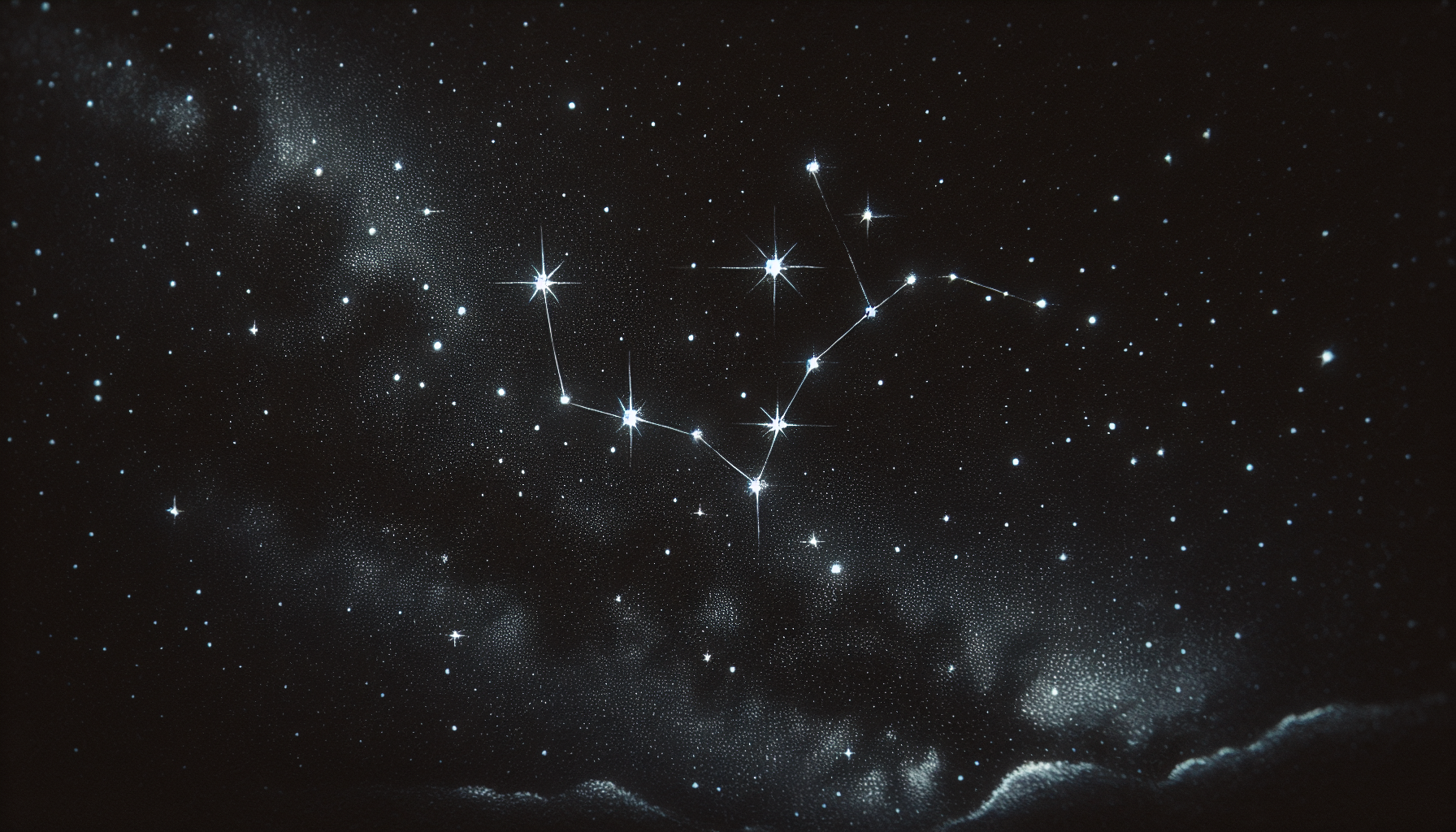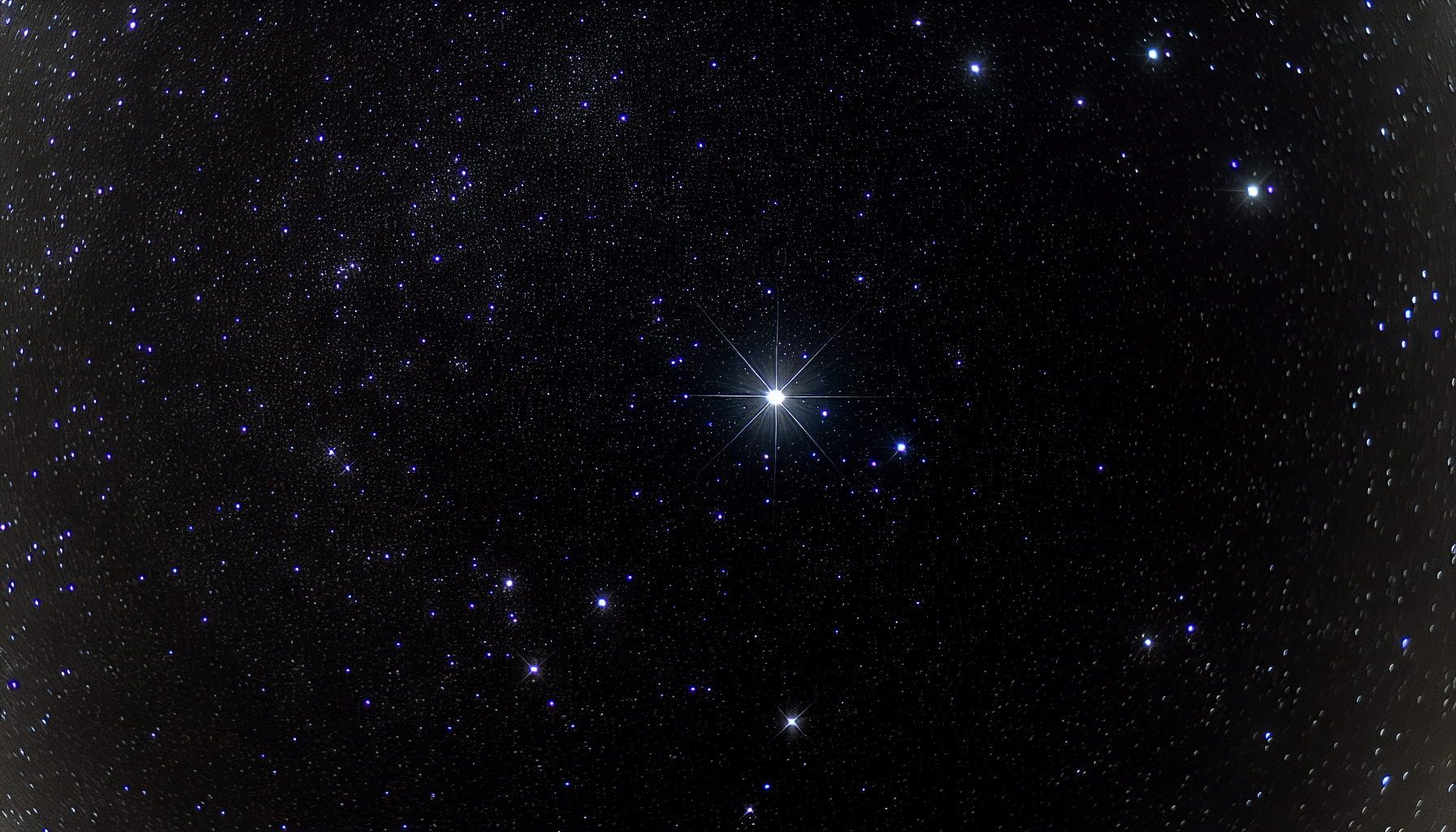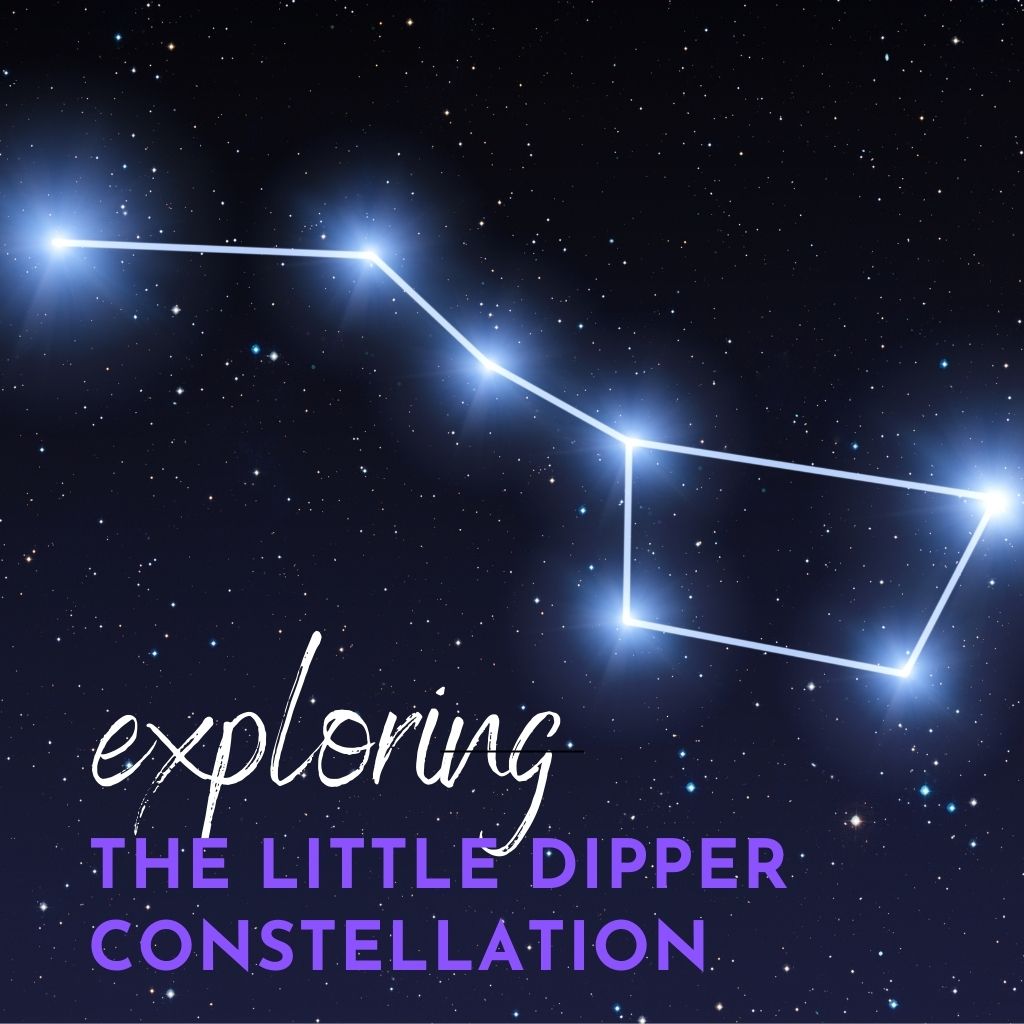This site contains affiliate links to products. I may receive a commission for purchases made through these links.
If you’re scanning the skies for the Little Dipper constellation, you’re not alone. Nestled in the Northern Hemisphere, anchored by the North Star, this guide provides the essential steps to spot and recognize the ‘Little Bear’ with ease. From finding Polaris to exploring the adjacent stars, our article strips away the complexity, making stargazing accessible for all.
Key Takeaways
- The Little Dipper is most visible in June, with its main star Polaris easily observable, though dark skies are needed to view its fainter stars.
- The Little Dipper serves as a guide for celestial navigation, with the altitude of Polaris offering a way to determine latitude and the Big Dipper providing a path to locating Polaris.
- While known for its navigational importance, the Little Dipper also encompasses variable stars, deep-sky objects, and plays a role in meteor showers like the Ursids.
Stargazing Essentials: Locating the Little Dipper

The Little Dipper, an asterism within the constellation Ursa Minor, is a permanent fixture in the Northern Hemisphere’s night sky. The constellation is at its most visible in the month of June, providing an excellent opportunity for stargazers to observe this celestial spectacle. While the North Star, Polaris, marking the end of the Little Dipper’s handle, is easily visible, the other stars that make up the constellation are fainter, requiring dark skies away from light pollution for optimal viewing.
Therefore, you can find the Little Dipper etched against the cosmos’s vast expanse on any clear night from mid-northern latitudes.
Spotting the Little Dipper’s Handle
Identifying the Little Dipper starts with spotting its handle, which is made up of four stars. At the end of the handle, you’ll find the North Star, Polaris, followed by Delta, Epsilon, and two fainter stars closer to the bowl.
You can locate the Little Dipper’s handle more easily by using the Big Dipper as a pointer. The handle of the Little Dipper curves towards its larger counterpart. If you follow the arc from the Big Dipper’s handle, it will lead you directly to Polaris, facilitating the spotting of the Little Dipper.
Tracing the Bowl of the Lesser Bear
After locating the handle, your subsequent task is to outline the bowl of the Little Dipper. The bowl is formed by four stars, with Pherkad at the upper end, Kochab at the lower outer side, and Zeta and Eta as the fainter stars completing the bowl. The shape of the bowl can be likened to a rectangle with rounded corners, providing a unique identifier in the night sky.
Adjacent Constellations
The night sky, a vast canvas sprinkled with various constellations, has several that share their boundaries with the Little Dipper. These include:
- Ursa Major
- Draco
- Camelopardalis
- Cepheus
- Cassiopeia
These adjacent constellations play a crucial role in aiding the location of the Little Dipper in the night sky.
Ursa Major, with the prominent Big Dipper asterism, serves as a key navigational tool. By extending a line through the ‘pointer stars’ of the Big Dipper, you’ll be led to Polaris, marking the end of the Little Dipper’s handle. Meanwhile, the constellation Draco winds its way between the Big and Little Dippers, offering a reference for the relative positioning of the Little Dipper.
Knowing these constellations well can both enrich the stargazing experience and aid in pinpointing the Little Dipper more accurately.
The Stars of Ursa Minor

The Little Dipper comprises several stars, each boasting unique characteristics and varying brightness levels. The most notable among these are:
- Polaris, also known as the Pole Star: a yellow-white supergiant with an apparent magnitude ranging from 1.97 to 2.00, making it the brightest star in the constellation.
- Kochab: an orange giant with an apparent magnitude of 2.08.
- Yildun: a lesser-known star that emits light at magnitude 4.36.
Besides these, the Little Dipper also houses Zeta Ursae Minoris at the bowl’s northernmost point, along with Delta Ursae Minoris and Yildun – less prominent stars with visual magnitudes of 4.35 and 4.36 respectively.
Polaris: The Guiding Star
Polaris, often called the North Star, serves as a vital celestial guide. Sitting almost directly above the North Celestial Pole at the end of the Little Dipper’s handle, this yellow-white supergiant is approximately 434 light-years away. Polaris has not always held the role of the North Star and due to precession, will be succeeded by other stars over time, relinquishing its position to Errai (Gamma Cephei) around the year 3000.
Furthermore, Polaris is part of a binary star system, providing opportunities for astronomers to research gravitational effects and calculate the mass of these stars.
Kochab and Pherkad: Guardians of the Pole
Kochab and Pherkad, known as the Guardians of the Pole, were once the twin pole stars, circling the North Celestial Pole and serving as celestial guides for navigation. These two outer stars, Kochab, designated Beta Ursae Minoris, is the brightest star in the bowl of the Little Dipper, shining with an apparent visual magnitude of 2.08.
Pherkad, identified as Gamma Ursae Minoris, is a white bright giant star with an apparent magnitude that varies, usually around +3.05, placing it towards the top end of the Little Dipper’s bowl.
The Lesser-Known Stars
While Polaris, Kochab, and Pherkad are the most well-known stars of the Little Dipper, the constellation also houses lesser-known stars. These include:
- Delta Ursae Minoris, a white main-sequence dwarf star
- Epsilon Ursae Minoris, part of a triple star system
- Zeta Ursae Minoris, which has a spectral type of F5V
- Eta Ursae Minoris, a yellow-white main-sequence star of the same spectral class, F5V
These outer stars, despite their faintness, contribute to the beauty and complexity of the Little Dipper, also known as the Little Bear.
Celestial Navigation: Using the Little Dipper

Historically, the Little Dipper has served as a reliable guide for celestial navigation. Greek sailors, for instance, utilized the constellation Ursa Minor, which includes the Little Dipper, as a navigational tool. The constellation Ursa Minor was referred to as ‘Cynosura’ by the Greeks, a name meaning ‘dog’s tail,’ signifying its importance in Greek celestial navigation.
The Latin term ‘septentrio,’ translating to ‘north,’ refers to the Little Dipper’s seven bright stars that point northward, originating from ‘septem triones’ or ‘seven oxen’.
The Role of Polaris in Celestial Navigation
Polaris’s proximity to the North Celestial Pole renders it an invaluable tool for celestial navigation. Though Polaris marks a near-precise location of the north celestial pole, it has an offset of about 39 arc-minutes from the true North Pole.
The altitude of Polaris corresponds to the latitude of the observer’s location on Earth, making it a reliable tool for determining direction and latitude.
From Big to Little: A Navigational Path
A helpful navigational path in the night sky involves using the bigger constellation, the Big Dipper, to locate the Little Dipper. Extending a line through the Pointer Stars, Merak and Dubhe, of the Big Dipper’s bowl will lead you directly to Polaris, the brightest star in the region of the sky indicated by the line from Merak and Dubhe.
Once Polaris has been found, it serves as a guide to the rest of the Little Dipper, marking the end of the dipper’s handle.
The Little Dipper Across Cultures and Mythology

Various cultures steep the Little Dipper, also known as Ursa Minor, in mythology and lore. In Greek mythology, for example, the stars of the Little Dipper were associated with various figures, such as the nymphs of the Hesperides guarding Hera’s orchard and the Cretan nymphs caring for the infant Zeus.
The constellation, also known as the seven stars, was known to ancient Babylonians as the ‘Wagon of Heaven’, and the Latin word ‘septentrio’ references the seven bright stars of the Little Dipper pointing toward the north.
Greek Mythology and Ursa Minor
In Greek mythology, the constellation Ursa Minor was introduced by the Greek mathematician Thales of Miletus around 600 BCE after recognizing its value for navigation from the Phoenicians. The Greeks also referred to Ursa Minor as Cynosura, meaning “dog’s tail”, though the exact reason behind this name is uncertain.
Worldwide Stellar Lore
Polaris, the North Star, holds a place of great significance in navigation for cultures around the world. Throughout history, Polaris has been known by various names such as:
- Alruccabah
- Navigatoria
- Mismar
- Stella Maris
These names reflect its importance across different civilizations.
Astronomical Significance of the Little Dipper

Apart from its roles in celestial navigation and cultural narratives, the Little Dipper hosts several deep-sky objects and astronomical phenomena, including:
- Ursa Minor Dwarf
- NGC 3172
- NGC 6217
- NGC 6251
Variable Stars and Systems
The Little Dipper houses variable stars such as Polaris and Epsilon Ursae Minoris, each with unique properties and systems. Polaris, for example, is a classical Cepheid variable and a primary component in a triple star system, while Epsilon Ursae Minoris is a complex triple star system consisting of a yellow G-type giant and an eclipsing binary star.
Deep Sky Objects and Meteor Showers
The Little Dipper is also associated with meteor showers, such as the Ursid meteor shower, which occurs annually between December 18 and 25. This meteor shower is caused by Earth passing through debris from Comet 8P/Tuttle, and features a radiant point in the northern sky, making it best viewed from the Northern Hemisphere.
Observing the Little Dipper: Practical Tips
While observing the Little Dipper can prove rewarding, it demands specific conditions for an optimal viewing experience. Clear, dark skies are crucial for observing this constellation due to the faintness of most of its stars.
Best Viewing Practices
For an enhanced viewing experience, the Little Dipper’s stars appear more vividly in the June evening sky. However, due to the faintness of the stars between Polaris and the outer bowl stars, ideal dark-sky conditions are required for clear observation.
Overcoming Light Pollution
Light pollution can considerably lessen the visibility of faint stars, like those in the Little Dipper’s bowl. To overcome this, it is recommended to:
- Select a location far from city lights and bright light sources
- Preserve night vision by shielding your eyes from sudden bright lights
- Limit the usage of flashlights
Summary
The Little Dipper, a constellation rich in mythology, lore, and astronomical significance, is an intriguing feature of our night sky. Its stars, from Polaris to the lesser-known stars, each hold unique properties and contribute to the constellation’s role in celestial navigation. From the Greeks and Phoenicians to modern astronomers, the Little Dipper has served as a reliable compass in the cosmos. Whether you’re navigating the open sea or simply stargazing from your backyard, the Little Dipper serves as a celestial guide, reminding us of our place in the vast universe.
Frequently Asked Questions
What is the legend of the Little Dipper?
The Little Dipper is a colloquial name for the constellation Ursa Minor, known for its seven brightest stars forming the shape of a dipper, and its end star, Polaris, holds significant importance. In mythology, Ursa Minor represents Arcas, the son of Zeus and the maiden Callisto, who were transformed into bears and placed in the sky for protection.
What does the Little Dipper symbolize?
The Little Dipper symbolizes balance and the inextricable link between mother and child, similar to yin and yang. Its orientation, being upside down when the Big Dipper is upright, represents this balance.
When can you see Little Dipper?
You can see the Little Dipper, or Ursa Minor, best in the month of June, between latitudes 90 and -10. However, its visibility may depend on the quality of your night sky. The star at the end of its handle is Polaris, which can be seen at any hour on any night of the year from most localities in the Northern Hemisphere.
What constellation is in the Little Dipper?
The constellation in the Little Dipper is known as Ursa Minor, also called the Little Bear. The North Star, Polaris, is the most important star in this constellation. It is located at the very end of the bear’s long tail.
What is the significance of Polaris in celestial navigation?
Polaris, also known as the North Star, is important in celestial navigation because its position is closely aligned with the North Celestial Pole, allowing navigators to determine their latitude based on its altitude. This makes it a valuable tool for finding direction at sea or in the wilderness.




